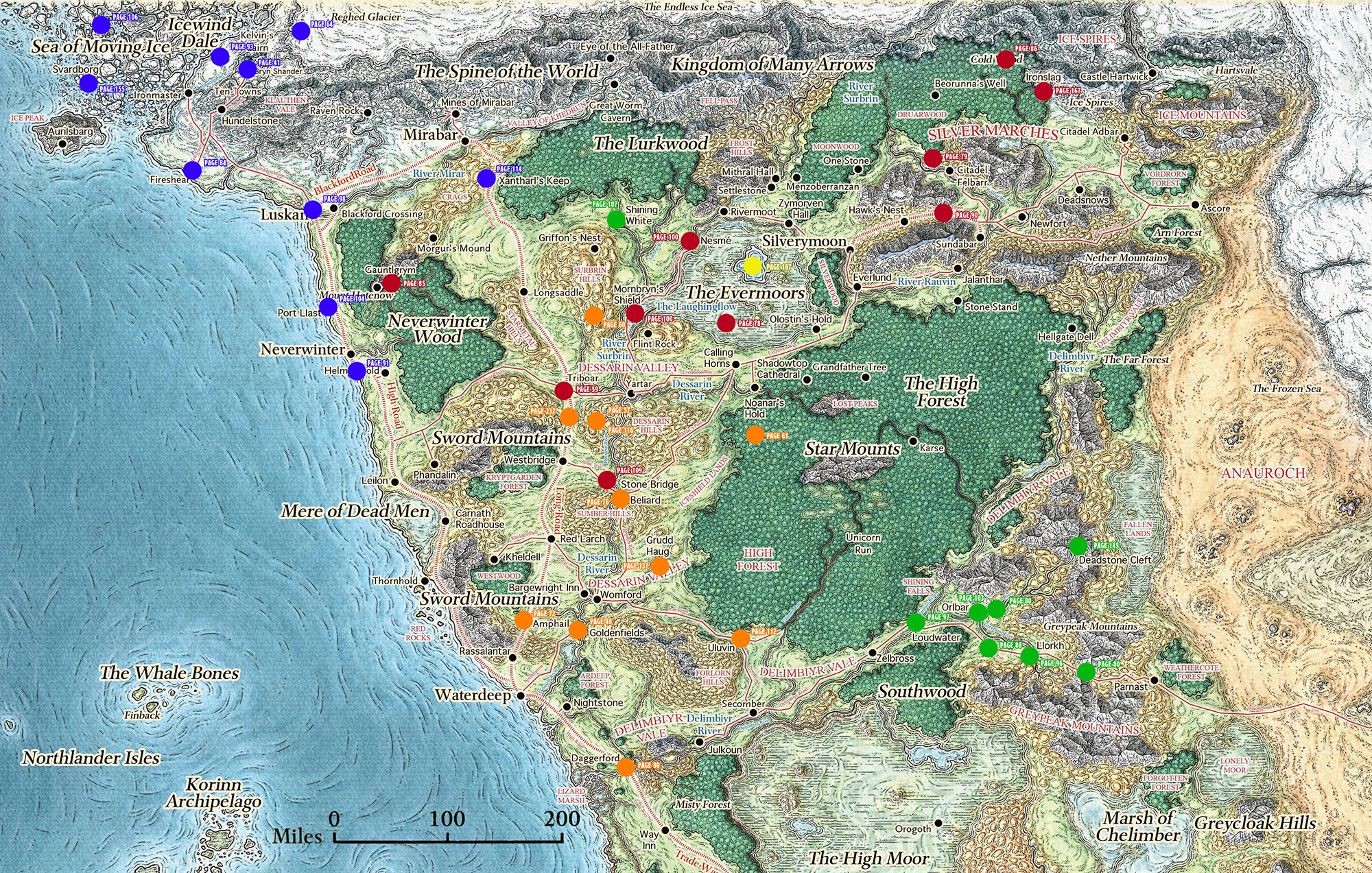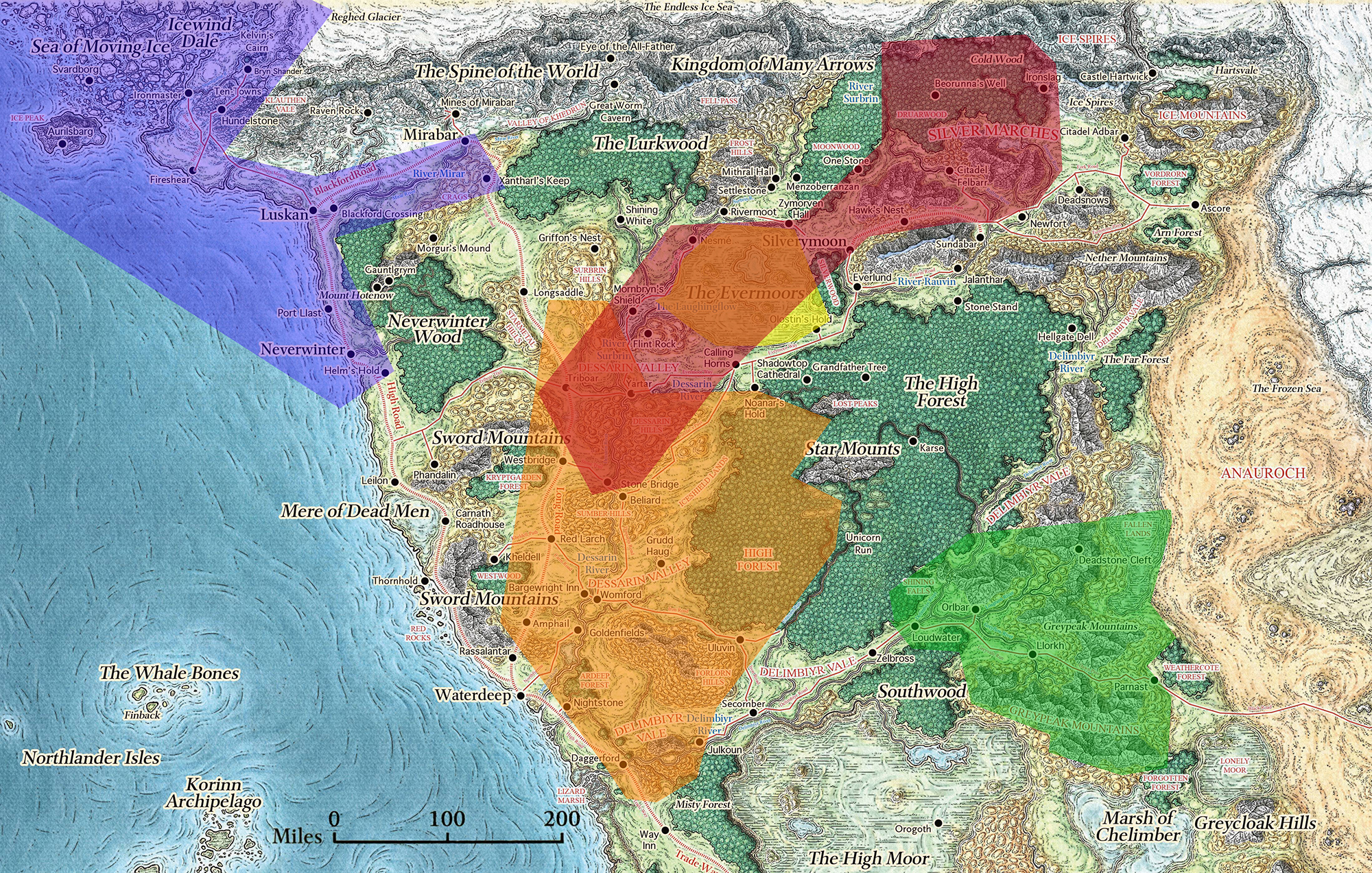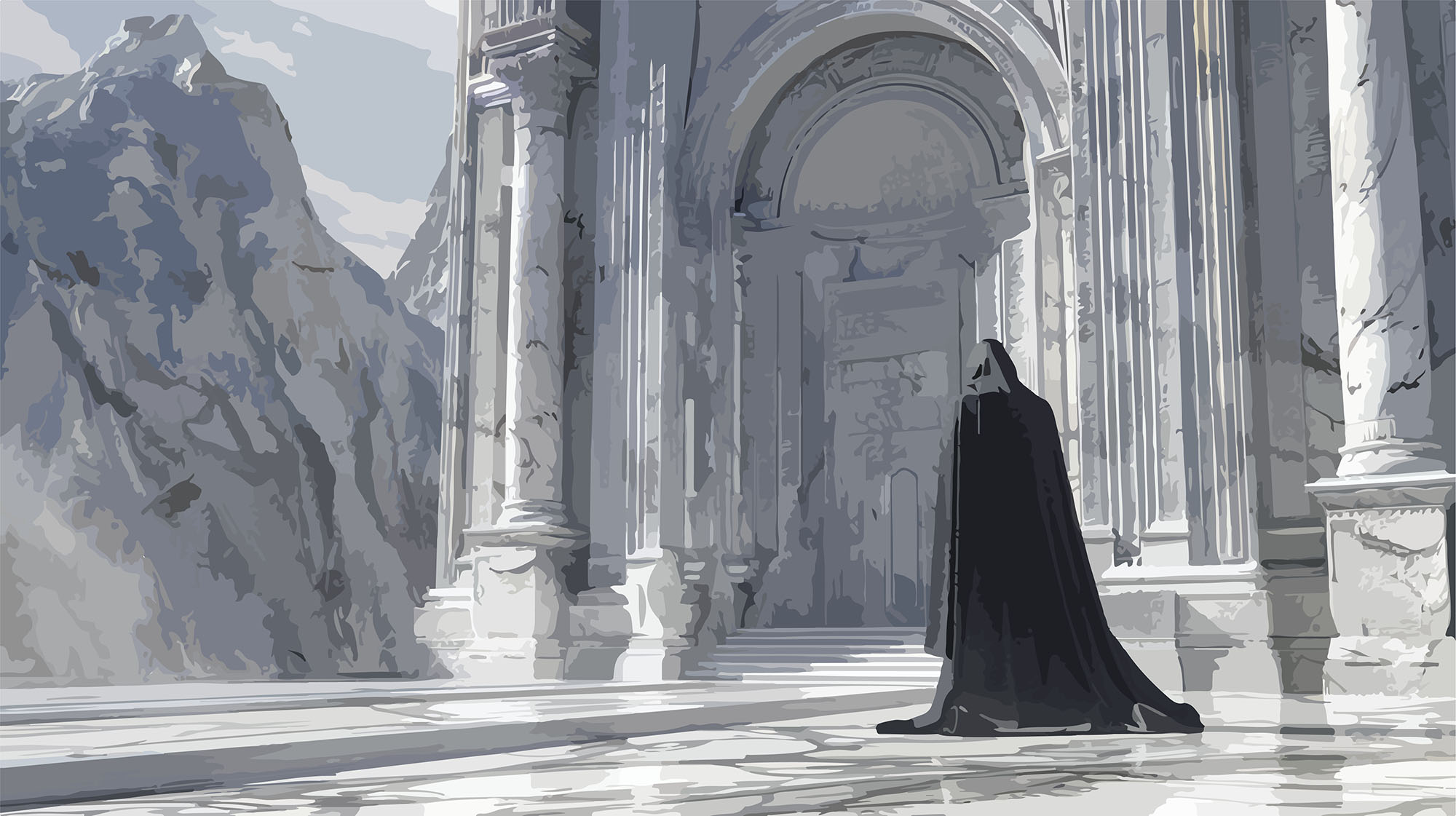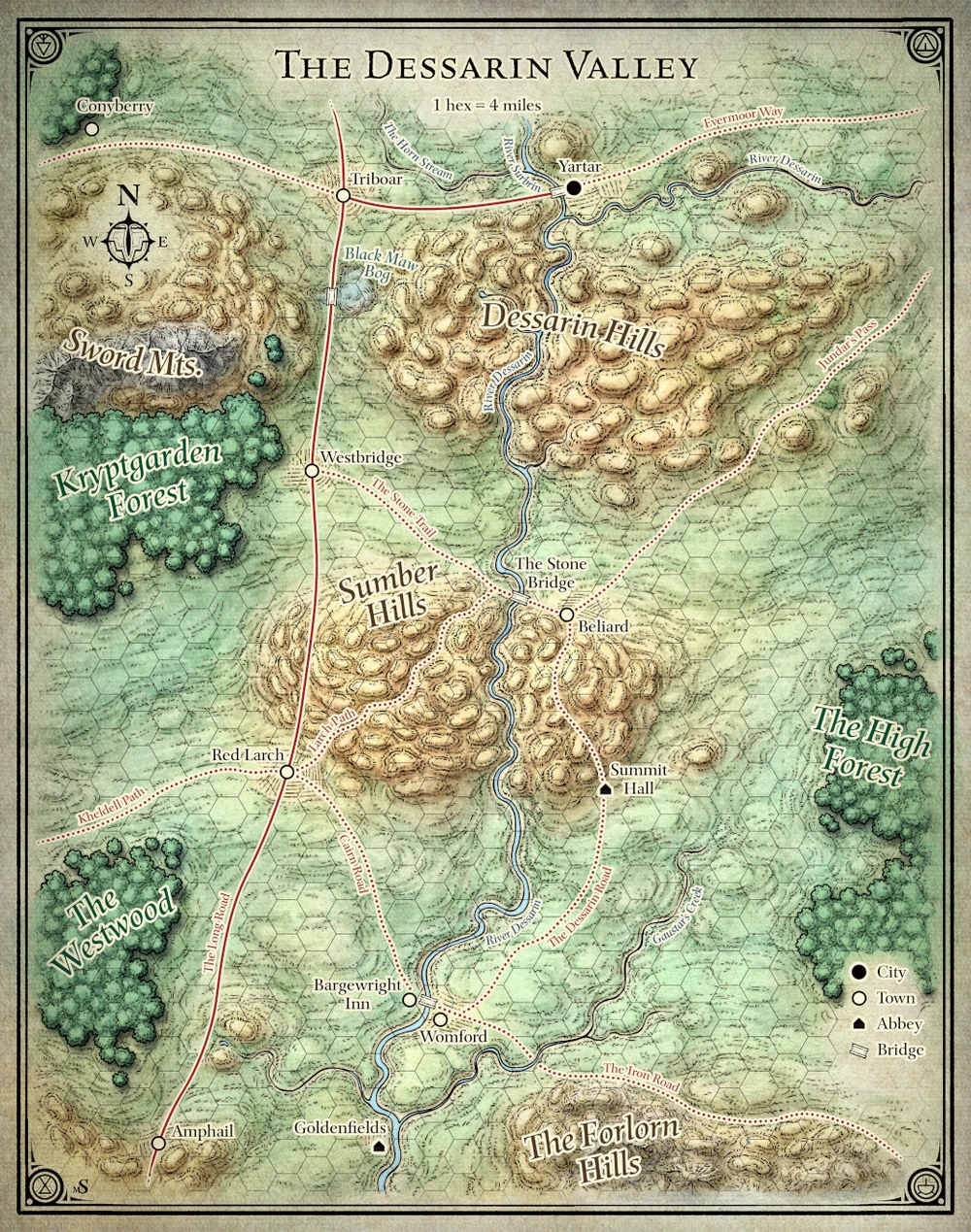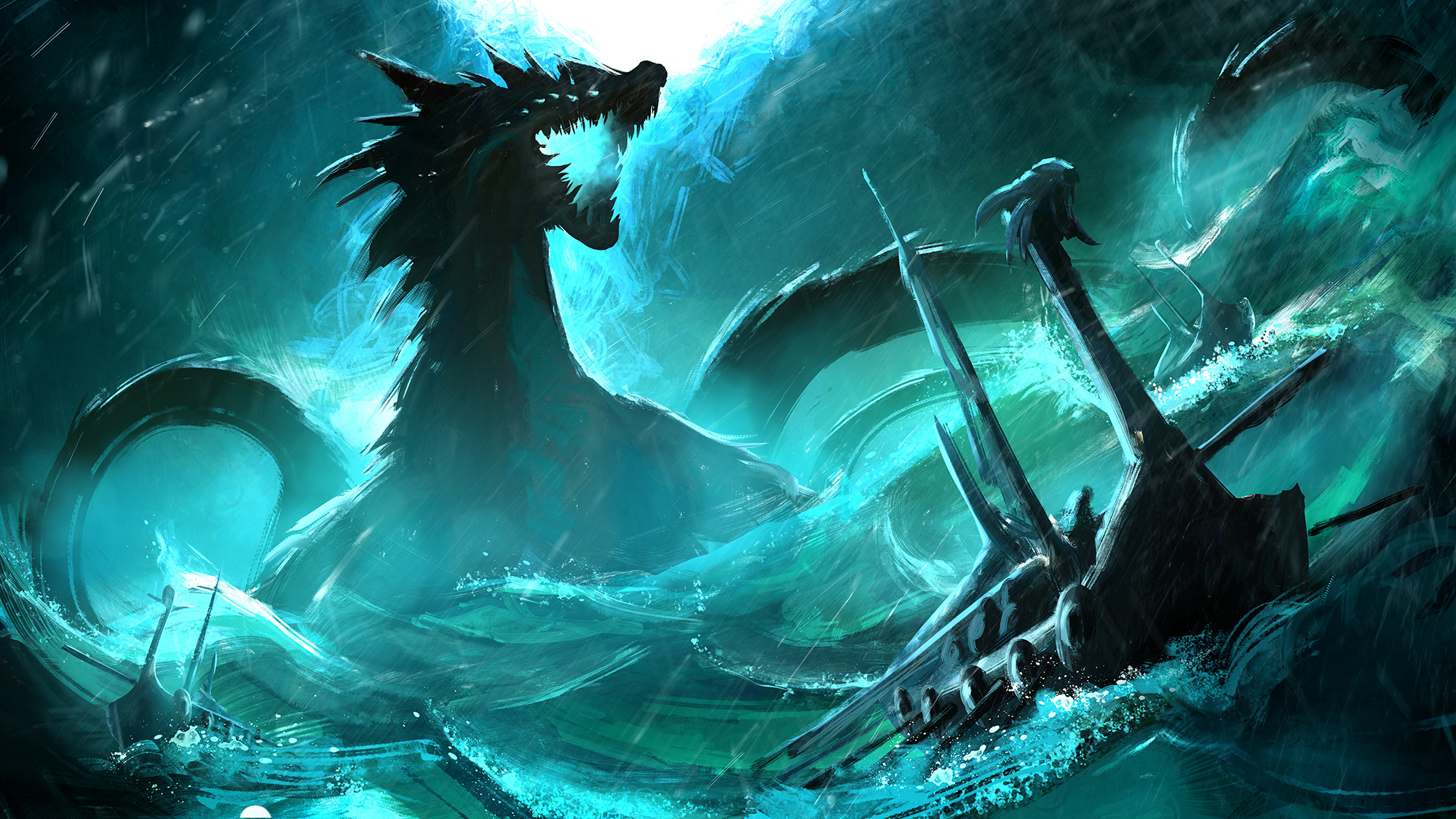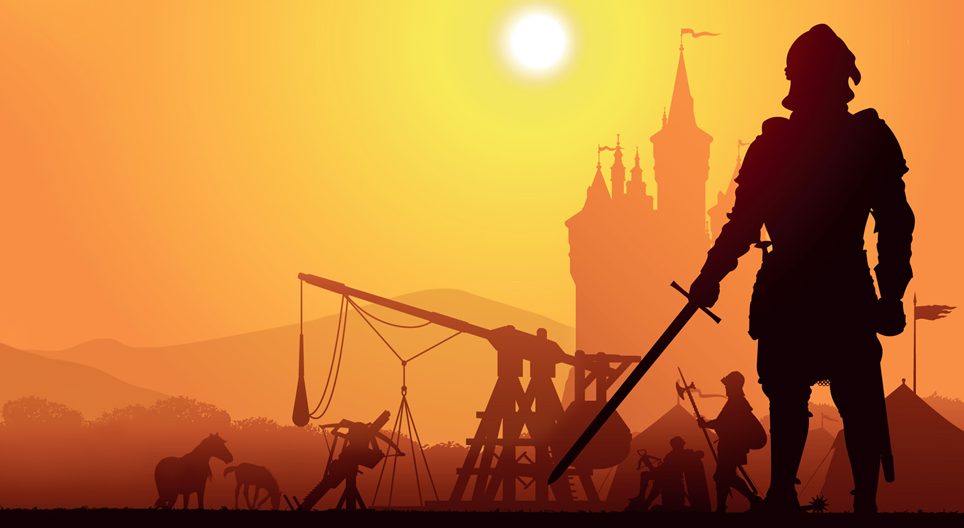
Go to Table of Contents
The War of the Giants has begun!
Whether that’s a war against the giants, the war the giants are fighting against each other, or some form of draconic crusade will depend on how your campaign goes. But the core concept is that the campaign has escalated beyond dungeons crawls and simple raids: The PCs are no longer a simple fellowship, but are part of an alliance — likely an alliance they have helped forged themselves! — capable of resolving an international conflict.
There are several ways you can handle this, possibly all at the same time.
TRUE WAR
Armies have been gathered and mass combat is the order of the day!
A full-scale military operation is a thrilling option to consider, but vastly exceeds the resources available to us in Storm King’s Thunder. Not only are the giants and other faction threats scaled to tactical combat with a group of five PCs (not armies marching across the Sword Coast), but we also don’t have the mechanical support or scenario structures for running a war campaign in D&D 5th Edition.
If you want to go big, therefore, you’re going to have to start basically from scratch and it’ll take a lot of work to pull it off. I can suggest a couple of options you might want to consider, however.
Option #1: Handle the macro-strategic elements of the war — the size of the armies, their movements, etc. — in a more or less ad hoc fashion. For the individual battles, adapt the fray system from Shadow of the Dragon Queen to put the PCs on the battlefield and in the thick of things.
The major shortcoming of the fray system is that the PCs’ actions don’t truly have an impact on the outcome of the battle. The old D&D 3rd Edition module Red Hand of Doom used a similar system, but also had the PCs’ actions matter more in the grand course of things. You may find it useful to draw some inspiration from that.
Option #2: Implement a full-fledged system for war. MCDM’s Kingdoms & Warfare might be a good place to start, although its primary focus may not make it a perfect fit for what your Storm King’s Thunder campaign needs. Another project with Matt Colville as one of the lead developers you may find useful here is Fields of Blood: The Book of War, another 3rd Edition-era supplement.
ALLIED ASSAULTS
Instead of full-scale war, we can evoke a similar thematic scope of allies gathering to fight titanic struggles while still keeping within a typical D&D-style tactical scale (i.e., individual combatants on a manageable tabletop battlefield). They key escalator here — what will make these fights feel larger-than-life and bigger than a typical D&D combat encounter — is simply the allies themselves: It won’t just be the PCs vs. the bad guys; it will be the PCs + their allies vs. a much larger and/or more dangerous force of bad guys.
Storm King’s Thunder already includes an example of what these allied assaults might look like: In Chapter 12, a combined strike force of PCs and storm giants head to Iymrith’s lair for a gigantic showdown with the blue wyrm!
Whether these allied assaults are targeting giant strongholds or draconic lairs (or both) in your campaign’s final act, they’ll follow a similar structure:
- The PCs will hit up their allies.
- Their allies will provide a strike force.
- The players will run both their PCs and their other members of their strike force.
Giving each player one additional character to play during the assault is probably ideal, and in practice I’d suggest that two additional characters per player is probably the maximum you’d want them to be juggling simultaneously. Fortunately, this is more than enough for the scale of the confrontation to feel epic in scope.
On the other side of the battlefield, if the PCs line up a bunch of allied support and then siege the giant strongholds, the problem you’ll immediately run into is that these strongholds were balanced on the assumption that the PCs — and only the PCs! — would be attacking them. If the PCs attack with a much larger and more powerful force, they’ll likely just roll over the opposition.
This isn’t necessarily a bad thing for the first allied assault: It will be like a reward for the hard work the PCs have put into bringing that allied force together. But if the end of the campaign turns into a series of trivial mop-up actions, that likely won’t feel very satisfying.
Fortunately, there are a few options you can use here.
Reinforcements: Simply add more giants to the strongholds. Whether they’re mustering for their own military actions or bolstering their defenses in response to the PCs’ assaults, the giant lords are simply calling more giants home to defend their strongholds.
Allies vs. Allies: Along similar lines, if the PCs are forging alliances to take down the giants, it will likely force the giants into new alliances with each other. For example, the fire giants of Ironslag and the cloud giants of Lyn Armaal might join forces in a defensive pact. (This will also reduce the number of stronghold assaults you need to play out, which may be useful if your group is finding “fight yet another giant stronghold monotonous”.)
Alternatively, you can use the concept of enemy alliances to evoke “offscreen” giant factions — e.g., the cloud giants of Lyn Armaal ally with the cloud giant wizard who stole the Nightstone. This allows you to simply increase the number of giants (or their small-folk allies) present, in a fashion similar to reinforcements, while simultaneously raising the stakes and making the scale of the giant crisis seem vast.
Split the Assault. If the players adopt — or can be encouraged to adopt — a battle plan in which the strike teams split up and each assault a stronghold from a different direction, you may not need to rebalance the encounters at all. The encounters will be split across multiple groups, but since each group will have roughly the same strength as the PCs, each encounter will remain a balanced and challenging fight.
These split assault plans may also make it easier for the players to juggle multiple characters, since the strike teams can be arranged in such a way that each player has one character in each team.
In terms of actually running these encounters, I recommend checking out Spectacular Sidekicks for techniques to use while running multiple characters simultaneously. Remember that the Three Cities Proxies will have also given your group some basic training in running these types of encounters.
On your side of the screen, these assaults will run best if you can run them dynamically, having the defenders actively respond and adapt to the actions of the PCs and their allies. Don’t be afraid of letting this collapse towards a dramatic final stand in which the various assault teams join up for one final, epic assault on the final defenders. (See “Dynamic Encounter Design” in So You Want To Be a Game Master, p. 186.)
Tip: On a wider scale, you might also want to consider how, why, and when the PCs enemies — whether giants, dragons, or other factions — might choose to counterattack, forcing the PCs into a defensive scenario for a change of pace.
SPECIAL OPS
Along similar lines, you can evoke a larger battle or military campaign, but rather than focusing the gameplay on that military campaign, you can instead put the focus on the PCs performing essential special ops missions:
- Disabling supply lines.
- Assassinating a giant leader.
- Sneaking into a besieged fortress to lower the gate.
- Breaking through enemy lines to deliver a vital message or object.
And so forth. Instead of Aragorn leading the Army of the Dead at the Battle of the Pelennor Fields, the PCs are taking the role of Frodo and Sam sneaking into Mordor with the Ring.
The exact nature of these special ops will depend a lot on exactly how your campaign’s endgame is playing out, but I would certainly look for opportunities that leverage the existing resources in Storm King’s Thunder — e.g., the giant stronghold maps and keys. You’ll likely also discover that it’s easiest to frame and hook these special ops missions if the PCs are taking orders from someone else (who can give the a mission brief). That may be less desirable, of course, then having the players feel like they’re in the driver’s seat.
MIXED METHODS
In practice, none of these techniques need to be all-or-nothing. PCs who have conceived, coordinated, and executed an allied assault may report back and get assigned to a special ops, only to receive a promotion and lead the troops during a full-fledged wargame finale.
Or, alternatively, the players might be running a full-scale war, only to conclude — like Aragorn parting ways with King Theoden to recruit the Army of the Dead — that there’s a special op that requires their attention.
Or perhaps while some are holding back the armies of the fire giants, the PCs will need to lead allied assaults on dragon lairs in order to complete a draconic crusade and seal the deal for a new Ordning.
CONCLUSION
The common theme here, of course, is that the true conclusion of Storm King’s Thunder is uncharted territory: Neither I nor you nor your players will truly know the fate of Faerun until that fate is forged at your table.
With the right tools and techniques in your pocket, though, you should be able to confidently follow your players’ lead, actively play the huge cast of characters and factions at your disposal, and discover that thrilling tale together.
ADDENDUMS
Addendum: Kraken Society
Addendum: Faction Reference
Addendum: Three Cities Proxies

